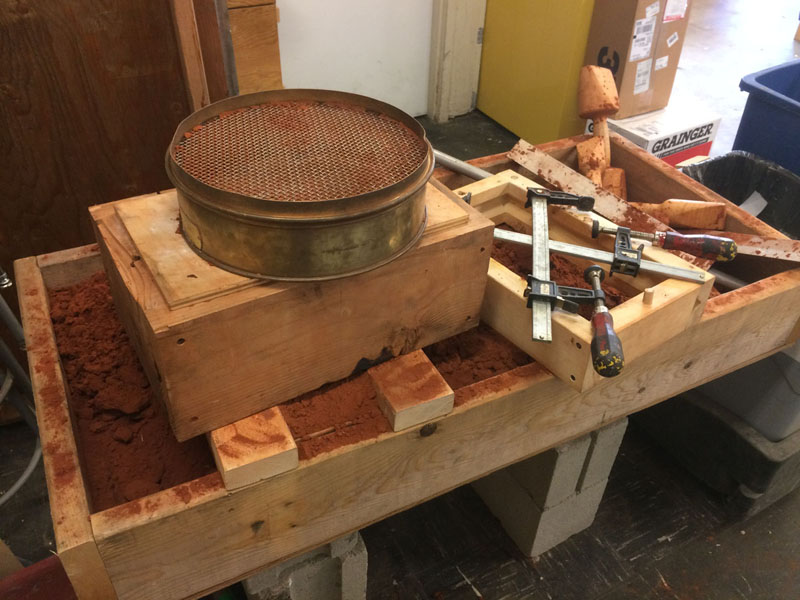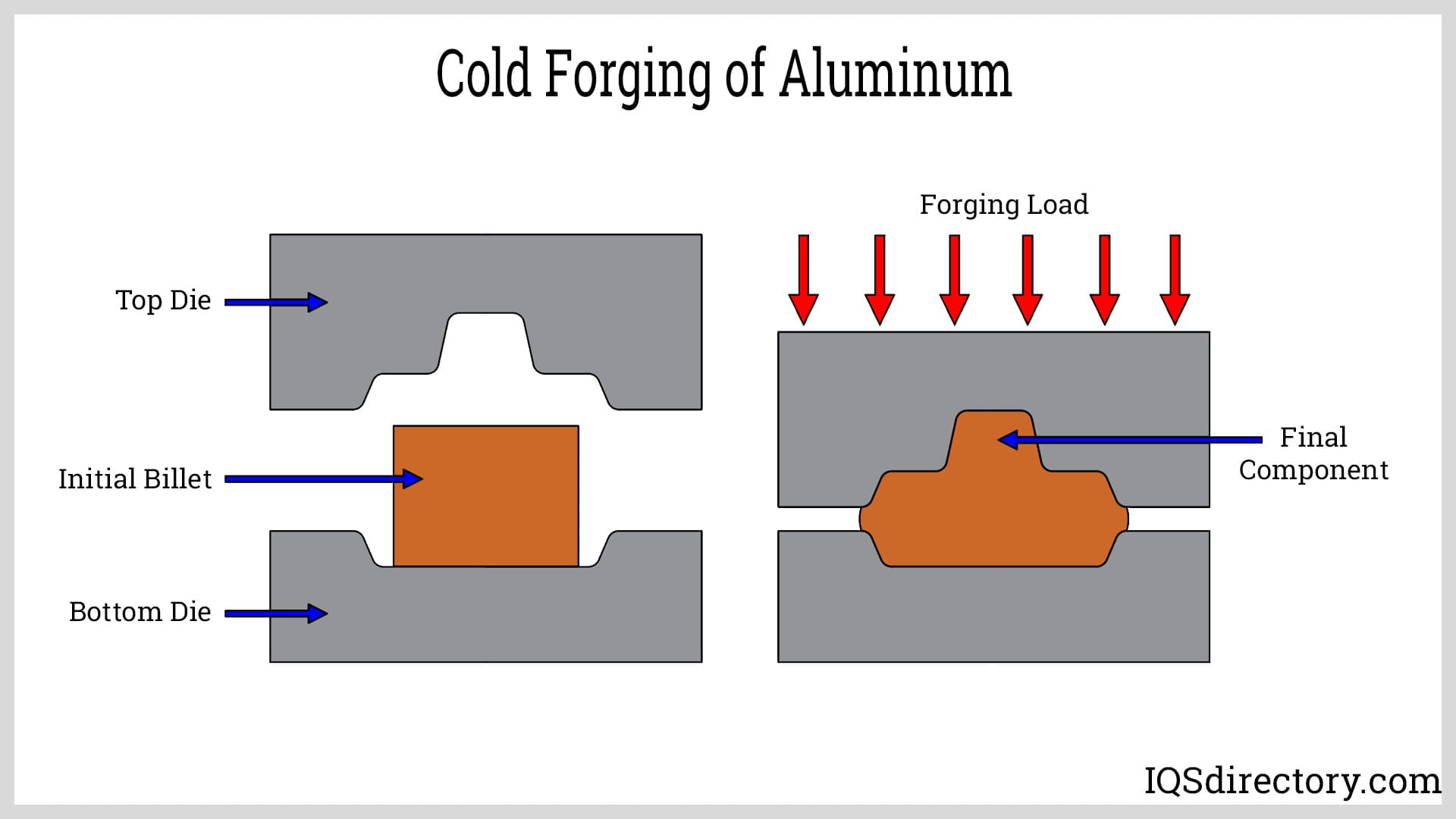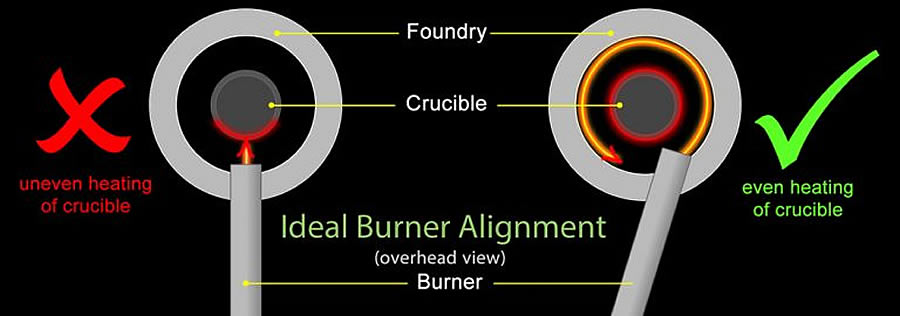Just How Aluminum Foundry Contributes to Innovations in Aerospace Engineering
Aluminum shops are important to developments in aerospace design. They produce light-weight, high-strength elements that are important for modern-day aircraft. With advanced casting techniques, these factories develop complex geometries that enhance architectural stability. In addition, the development of remarkable Aluminum alloys sustains the industry's focus on fuel performance and sustainability. Challenges stay in the production process. Recognizing these elements exposes the extensive impact of Aluminum on air travel's future.
The Relevance of Lightweight Products in Aerospace Style
As the aerospace sector continues to progress, the significance of light-weight products ends up being progressively evident. The demand for effectiveness and sustainability drives designers to focus on using products that decrease overall weight without endangering structural integrity. Lightweight materials, especially Aluminum, play a crucial role in enhancing gas performance, improving haul capability, and boosting the total efficiency of airplane.
The assimilation of these materials allows for cutting-edge layouts, allowing producers to create even more wind resistant shapes that can hold up against severe conditions. The decrease in weight not just lowers functional costs but additionally adds to a reduced environmental footprint, aligning with global efforts toward sustainability in aeronautics.
Advanced Spreading Techniques in Aluminum Foundries
Advanced spreading methods in Aluminum shops play a crucial duty in aerospace design by enabling the manufacturing of precise and light-weight components. Advancements in mold layout and precision casting procedures are necessary in attaining excellent performance and architectural honesty. In addition, the advancement of light-weight alloys improves the total effectiveness and effectiveness of aerospace applications.
Cutting-edge Mold Style
Ingenious mold style plays a vital role in the performance and efficiency of Aluminum shops, specifically within the aerospace industry. By leveraging innovative materials and strategies, modern mold and mildews can be crafted to stand up to heats and pressures, ensuring peak performance throughout the casting process. These layouts typically include complicated geometries that permit for the production of lightweight yet structurally sound elements, vital for aerospace applications. Additionally, the usage of computer-aided layout (CAD) software application promotes accurate modeling, making it possible for foundries to simulate and refine mold and mildew designs before physical manufacturing begins. This not only enhances the high quality of actors components yet also decreases waste and lead times, causing substantial expense financial savings. Generally, innovative mold design is a foundation of progress in Aluminum Foundry technology for aerospace engineering.
Precision Casting Processes
The efficiency of cutting-edge mold and mildew styles seamlessly integrates with precision casting processes, which are necessary for generating high-grade Aluminum parts in aerospace engineering. These processes, including sand casting, die casting, and financial investment casting, ensure the creation of intricate geometries with limited resistances. Advanced methods like vacuum casting and pressure die casting enhance the integrity and surface coating of the end products. Precision spreading lessens product waste while making the most of the mechanical residential or commercial properties of Aluminum, critical for aerospace applications. On top of that, utilizing real-time tracking and advanced simulation devices during the spreading process permits for instant changes, bring about enhanced high quality control. Collectively, these accuracy casting procedures placement Aluminum shops at the forefront of aerospace development, sustaining the sector's need for integrity and efficiency.
Lightweight Alloy Development
As aerospace designers seek to boost fuel performance and efficiency, lightweight alloy development comes to be a crucial focus in Aluminum shops. These factories utilize advanced spreading strategies to produce alloys that supply premium strength-to-weight proportions. Advancements in alloy make-up, including the unification of aspects like lithium and magnesium, allow the manufacturing of products that endure extreme problems while reducing general airplane weight. Techniques such as die spreading and financial investment casting assist in the accuracy manufacturing of complicated shapes, which are crucial for aerospace applications. Additionally, recurring study aims to maximize these alloys for enhanced mechanical properties and increased resilience. By prioritizing light-weight alloy advancement, Aluminum factories significantly add to the advancement of aerospace design, paving the means for a lot more sustainable and reliable aircraft designs.

Enhancing Structural Integrity Via Aluminum Parts
Aluminum elements provide significant advantages in boosting architectural honesty within aerospace design. Their light-weight nature adds to total efficiency while maintaining strength, which is necessary for airplane efficiency. Additionally, the tension resistance buildings of Aluminum aid ensure the toughness and dependability of aerospace frameworks under various functional problems.
Lightweight Product Perks
While standard materials often compromise weight for stamina, using Aluminum components in aerospace design provides substantial advantages in architectural honesty. Aluminum's light-weight nature adds to overall layout effectiveness, enabling even more streamlined airplane that consume much less gas, therefore improving sustainability. The material's excellent strength-to-weight proportion guarantees that parts maintain durability without adding unnecessary mass. This quality promotes boosted performance and agility in trip, as well as enhanced payload capacities. Furthermore, Aluminum's resistance to deterioration prolongs the life expectancy of aerospace frameworks, decreasing upkeep costs and improving safety. As makers increasingly adopt Aluminum alloys, the aerospace sector experiences a transformative shift towards extra reliable and efficient engineering remedies that focus on both performance and environmental obligation.
Stress And Anxiety Resistance Features
Various materials have unique properties, Aluminum's remarkable stress and anxiety resistance stands out as an essential aspect in improving the structural stability of aerospace components. This resistance plays a crucial role in guaranteeing that aircraft can stand up to different operational stresses, including exhaustion, influence, and environmental problems. Aluminum alloys, specifically engineered for aerospace applications, exhibit high tensile strength while keeping light-weight attributes, allowing engineers to design more reliable structures - Aluminum Foundry. Furthermore, the capability of Aluminum to endure cyclic loading without significant contortion adds to the durability and reliability of aerospace elements. As innovations continue in Aluminum Foundry techniques, the growth of stress-resistant Aluminum elements assures further renovations in performance, security, and efficiency throughout the aerospace market, solidifying Aluminum's duty as a favored material in modern design
Fuel Performance Improvements Driven by Aluminum Innovations
As the aerospace market looks for to improve fuel performance, innovative uses Aluminum have become an important service. Aluminum's light-weight nature significantly reduces airplane weight, allowing for reduced gas intake throughout trip. This reduction in weight is important, as also small reductions can bring about considerable enhancements in general fuel economy.
Advanced Aluminum alloys, created for boosted stamina and durability, make it possible for producers to develop components that keep architectural integrity while lessening mass - Aluminum Foundry. Additionally, the integration of Aluminum in airframes and engine parts helps with enhanced the rules of aerodynamics, contributing to minimized drag and raised efficiency
The adoption of Aluminum in aerospace not just satisfies the need for fuel-efficient design however also lines up with regulatory pressures for reduced emissions. As these technologies continue to progress, they play a substantial function in setting new criteria for gas performance, guaranteeing that the aerospace market can fulfill expanding economic and ecological obstacles.

The Duty of Aluminum in Sustainable Air Travel Practices
The enhancing emphasis on sustainable aeronautics techniques has positioned Aluminum as a crucial material in the mission for greener aircraft design. Known for its light-weight properties, Aluminum considerably reduces airplane weight, resulting in lower gas usage and emissions. Its recyclability further boosts its sustainability account, as Aluminum can be recycled indefinitely without loss of top quality. This browse around here particular supports a circular economic situation within the aeronautics market, lessening waste and resource deficiency.
In addition, innovations in Aluminum alloys have actually enhanced their strength and rust resistance, enabling longer life span and minimized upkeep needs. These innovations facilitate the growth of extra reliable airplane structures, adding to total sustainability initiatives. In addition, Aluminum's thermal conductivity plays a vital duty in energy-efficient styles, enhancing systems such as warmth exchangers. Jointly, these characteristics emphasize Aluminum's essential function in progressing sustainable aviation, aligning with worldwide initiatives focused on minimizing the ecological impact of air travel.
Challenges Encountered by Aluminum Foundries in Aerospace Manufacturing
While Aluminum factories play a necessary role in aerospace production, they deal with considerable challenges that can impact manufacturing efficiency and high quality. One significant challenge is the rigorous quality assurance criteria called for in the aerospace industry. Any kind of problem can compromise safety and security and performance, necessitating strenuous assessment procedures that expand production timelines. Additionally, factories frequently compete with changing resources prices, which can impact prices and success. The complexity of Aluminum alloys used in aerospace applications additional complicates the manufacturing procedure, as accurate formulations are essential for attaining desired mechanical properties. Knowledgeable labor lacks hinder the capacity to preserve top notch manufacturing levels. Ultimately, ecological guidelines enforce restrictions on discharges and waste administration, requiring foundries to purchase sustainable practices, which can be cost-prohibitive. These aspects collectively create a landscape where Aluminum factories should continually adapt to satisfy the evolving demands of aerospace manufacturing while guaranteeing safety and security and compliance.
Future Patterns in Aluminum Applications for Aerospace Design
With developments in technology and boosting needs for effectiveness, the future of Aluminum applications in aerospace design is positioned for Continue considerable change. The combination of cutting-edge Aluminum alloys and composites is anticipated to enhance strength-to-weight ratios, causing more fuel-efficient aircraft designs. Additionally, innovations in additive production strategies will permit the production of complex Aluminum frameworks that were previously difficult, optimizing performance and minimizing waste.

Sustainable methods will certainly play a vital function, with a growing emphasis on recycling Aluminum to lessen environmental effect. The aerospace market is likely to embrace smarter manufacturing processes, such as automation and man-made knowledge, making sure better and accuracy in Aluminum elements. Furthermore, partnerships in between Aluminum shops and aerospace business will certainly foster study and growth, leading the way for new applications that satisfy the rigorous needs of modern-day aerospace design - Aluminum Foundry. On the whole, the future looks guaranteeing for Aluminum's role in shaping the skies
Regularly Asked Inquiries
What Are the Ecological Effects of Aluminum Manufacturing in Aerospace?
The environmental impacts of Aluminum production in aerospace consist of considerable energy consumption, greenhouse gas exhausts, and habitat interruption. Furthermore, mining procedures can result in dirt destruction and water contamination, increasing issues about sustainability and ecological equilibrium.
Just How Does Aluminum Contrast to Other Products in Aerospace Applications?
Aluminum uses an unique mix of light-weight residential properties, corrosion resistance, and cost-effectiveness contrasted to various other products. Its high strength-to-weight proportion makes it especially useful for aerospace applications, enhancing gas efficiency and general performance in aircraft design.
What Credentials Do Aluminum Foundry Workers Demand for Aerospace Projects?
Aluminum Foundry employees need customized training in metallurgy and spreading methods, in addition to understanding of aerospace industry criteria. Certifications in top quality control and safety methods are additionally vital to assure compliance with strict aerospace task requirements.
Are There Any Kind Of Safety Worries With Utilizing Aluminum in Aerospace Design?
Safety issues pertaining to Aluminum in aerospace design include vulnerability to fatigue, tension, and corrosion cracks. Appropriate therapy and alloy choice are necessary to mitigate these dangers, making sure architectural honesty and general security in aerospace applications.
Exactly How Does Aluminum Recycling Advantage the Aerospace Industry?
Aluminum reusing greatly benefits the aerospace market by minimizing product expenses, minimizing environmental impact, and preserving power. This lasting technique improves the market's efficiency while advertising making use of lightweight, high-performance elements in aircraft production.
Advanced spreading methods in Aluminum foundries play a crucial duty in aerospace engineering by making it possible for the manufacturing of lightweight and specific components. Cutting-edge mold and mildew style plays an important role in the my website performance and effectiveness of Aluminum shops, specifically within the aerospace field. As aerospace engineers look for to boost gas performance and efficiency, light-weight alloy growth ends up being a necessary emphasis in Aluminum foundries. Aluminum alloys, especially engineered for aerospace applications, exhibit high tensile toughness while preserving light-weight attributes, allowing designers to create much more reliable structures. Partnerships in between Aluminum shops and aerospace companies will promote research and development, leading the way for brand-new applications that meet the strict needs of contemporary aerospace design.